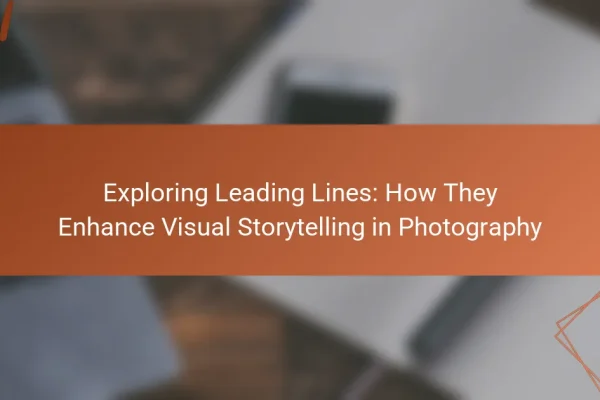
Welcome to Mac on Campus: Your Journey into Photography Awaits
At Mac on Campus, we believe that photography is more than just a skill—it's a way to capture life's most beautiful moments and express your unique vision of the world. Whether you're a complete beginner looking to take your first steps or an experienced photographer aiming to refine your craft, our photography education program offers a wealth of resources tailored to your needs. Join us as we embark on a creative adventure that will inspire and elevate your photographic journey.
Our expert instructors are passionate about sharing their knowledge and experience. They create an engaging and supportive learning environment where you can explore various photography styles, techniques, and tools. With hands-on workshops, interactive online classes, and a vibrant community of fellow photography enthusiasts, you'll discover all the support you need to ignite your passion and hone your skills.
Explore What We Offer
- Comprehensive photography courses for all skill levels
- Access to expert tutorials and resources
- Opportunities for practical experience through workshops
- Networking and collaboration with fellow photographers
- Guidance on portfolio development and career advancement
Welcome to Mac on Campus—where your photography dreams take flight!

Analyzing Depth of Field and Its Impact on Photography
Depth of field (DoF) in photography is defined as the range of distance within an image that appears acceptably sharp. It is influenced by three main factors: aperture size, focal length, and distance from the subject. A wider aperture (lower f-number) leads to a shallower DoF, effectively blurring the background and isolating the subject, which…

How to Use Color Theory to Enhance Visual Storytelling in Photography
Color theory is a framework that explains the interactions and psychological effects of colors, making it a critical component in photography. This article outlines how photographers can utilize color theory to enhance their visual storytelling by employing techniques such as color harmony, contrast, and temperature. Key concepts include the use of complementary and analogous colors…

Exploring Leading Lines: How They Enhance Visual Storytelling in Photography
Leading lines are compositional elements in photography that direct the viewer’s eye towards a focal point, enhancing visual storytelling. These lines can be natural, such as roads and rivers, or man-made features like fences and buildings. By creating depth and perspective, leading lines engage viewers and draw attention to key subjects, often evoking emotional responses….

Understanding RAW vs. JPEG: Advantages and Editing Implications for Photographers
RAW and JPEG are two primary image file formats utilized in photography, each with distinct characteristics and advantages. RAW files capture unprocessed data from the camera’s sensor, allowing for extensive post-processing flexibility, including adjustments to exposure and white balance without compromising image quality. In contrast, JPEG files are compressed and processed, resulting in smaller file…

Understanding Exposure Techniques for Better Photography
Exposure techniques in photography are methods used to control the amount of light that reaches the camera sensor, primarily through adjustments in aperture, shutter speed, and ISO settings. Each of these elements plays a crucial role in determining the overall exposure and quality of an image. The article explores various exposure techniques, including aperture priority,…

The Art of Retouching: Key Skills for Flawless Portrait Photography
The art of retouching in portrait photography focuses on enhancing and refining images to achieve a polished final result. Key skills involved include color correction, skin retouching techniques, and attention to detail, which are essential for creating high-quality images. Advanced techniques such as frequency separation, dodge and burn, and color grading are employed to enhance…

The Role of Color Theory in Effective Photography Composition
Color theory is a fundamental concept in photography composition that influences how colors interact and affect emotions. This article explores the significance of color theory in photography, detailing how complementary colors create visual tension, while analogous colors foster harmony. It also discusses the impact of color contrast in emphasizing focal points and guiding viewers’ attention….

Mastering the Use of Reflectors to Enhance Outdoor Photography
Reflectors are essential tools in outdoor photography that redirect light to enhance the lighting conditions of a subject. They come in various materials and colors, including silver, gold, and white, each producing distinct lighting effects that can reduce shadows and highlight details. Effective use of reflectors involves positioning them correctly to bounce light onto the…

The Importance of Lighting Ratios in Studio Photography
Lighting ratios in studio photography define the relationship between key light and fill light, significantly influencing shadow creation and the three-dimensional appearance of subjects. Common ratios such as 1:1, 2:1, 3:1, and 4:1 dictate how light is distributed, affecting mood and texture in images. This article examines the various lighting ratios, their effects on composition,…

An Introduction to Camera Lenses: Focal Length, Aperture, and Image Stabilization
Camera lenses are optical devices that focus light onto a camera sensor, playing a critical role in capturing high-quality images and videos. This article explores essential concepts related to camera lenses, including focal length, which determines the field of view and perspective, and aperture, which controls the amount of light entering the camera, influencing exposure…











